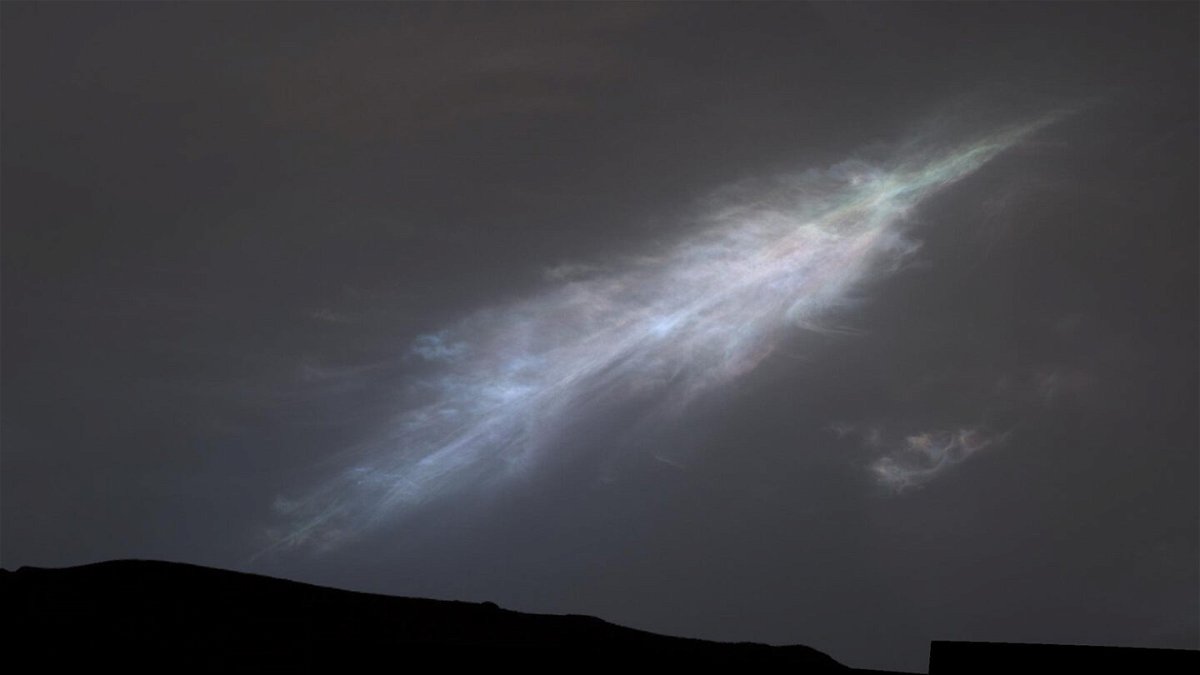NASA’s Curiosity rover shares a stunning sunset on Mars

The Curiosity rover just sent back a stunning postcard capturing its view of a shimmering sunset on Mars. The rover captured this feather-shaped iridescent cloud just after sunset on January 27.
By Ashley Strickland, CNN
The Curiosity rover just sent back a stunning postcard capturing its view of a shimmering sunset on Mars.
The NASA rover has been roaming across the surface of Mars for more than 10 years, searching for answers as to why the red planet went from warm and wet to a frozen desert. It has discovered intriguing rock formations, searched for signs of life and scaled Mount Sharp at the center of Gale Crater.
But rather than continuing to focus on the near-endless red stretch of rocks and dirt below its wheels, the rover has recently been looking up.
On February 2, Curiosity observed rays of sunlight stretching across the horizon and illuminating a bank of clouds as the sun set on Mars. It’s the first time the rays, known as crepuscular rays, have been seen so clearly on the red planet.
The rover is conducting a survey of twilight clouds on Mars to follow up on its previous observations of night-shining clouds. In 2021, Curiosity used its black and white navigation cameras to watch the structure of those clouds as they moved on Mars.
Clouds provide deeper insight about weather patterns and conditions. Scientists can use information about when and where clouds form on Mars to learn more about the planet’s atmospheric composition and temperatures, as well as wind.
The new survey, which kicked off in January and will wrap up later this month, utilizes the rover’s color camera located on its mast to watch as cloud particles grow.
On Mars, most clouds are made of frozen ice and float about 37 miles (60 kilometers) above the ground. But Curiosity spotted clouds that reach a higher altitude, as seen in the new photo, leading researchers to believe they are made of frozen carbon dioxide ice — or dry ice. Scientists are still studying them to figure out why this happens.
Curiosity captured a separate image of shiny, iridescent clouds that resemble feathers on January 27.
“Where we see iridescence, it means a cloud’s particle sizes are identical to their neighbors in each part of the cloud,” said Mark Lemmon, an atmospheric scientist with the Space Science Institute in Boulder, Colorado, in a statement. “By looking at color transitions, we’re seeing particle size changing across the cloud. That tells us about the way the cloud is evolving and how its particles are changing size over time.”
The-CNN-Wire
™ & © 2023 Cable News Network, Inc., a Warner Bros. Discovery Company. All rights reserved.